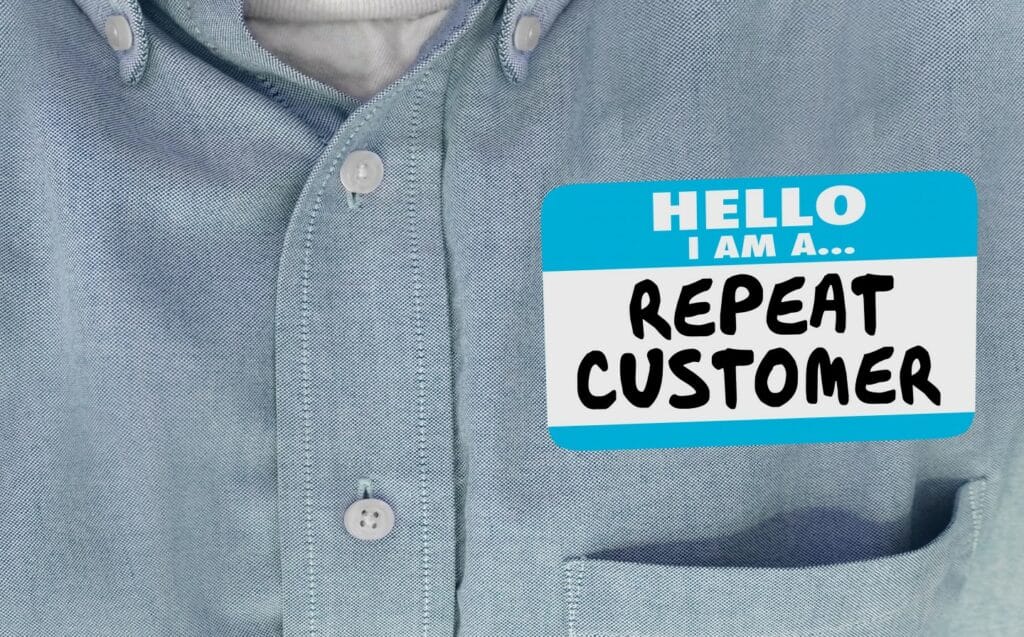
Are you looking to improve your business’s bottom line?
Understanding and using customer lifetime value (CLV) is essential. This comprehensive guide will provide actionable steps on how to use and measure customer lifetime value to drive profitability, sharpen your marketing strategies, and foster durable customer relationships.
We’ll show you how to calculate CLV, segment your customer base, and leverage this metric for sustained business growth.
Key Takeaways
- Customer Lifetime Value (CLV) is a critical financial metric that can guide marketing and retention strategies, enabling businesses to make informed decisions, optimize resources, and set growth targets.
- Effective CLV management involves identifying high-value customers, analyzing purchase history, and segmenting customers for targeted marketing, thus improving profitability through personalized engagement and loyalty programs.
- Technological tools such as CRM systems and predictive analytics are essential for tracking and forecasting CLV, providing valuable insights for strategic decisions in areas like pricing strategies, upselling, cross-selling, and customer experience improvements.
Understanding the Importance of Customer Lifetime Value
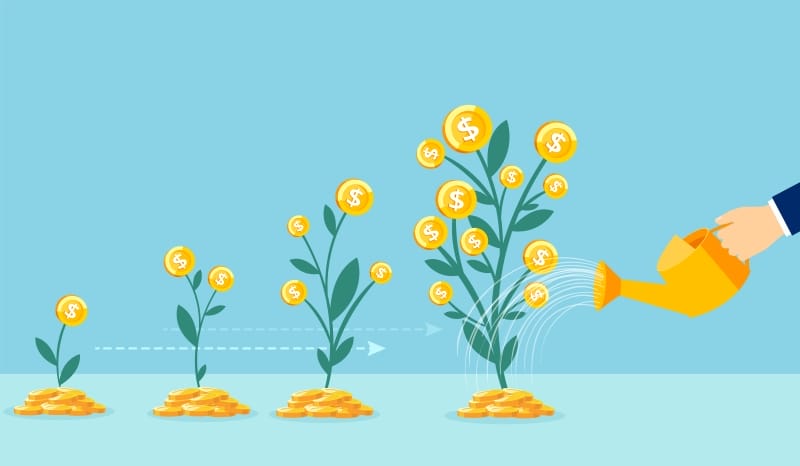
The concept of Customer Lifetime Value (CLV) serves as a key to unlocking business growth and customer insights. It represents the total worth of a customer over the entirety of their relationship with a business.
The customer lifetime value calculation empowers companies to make better decisions, utilize resources effectively, and set achievable goals for business growth.
This metric acts as a financial forecast and predictive customer lifetime value insight, guiding marketing and retention strategies toward a prosperous future.
Boosting profitability
The pursuit of profitability is a balancing act between customer acquisition costs and revenue per customer. This balance is achieved by focusing on increasing CLV, which is associated with lower customer acquisition cost and higher revenue generation.
Focusing on customer retention and targeting high-value customers can lead to a cost-effective surge in profits since repeat customers tend to spend more over time.
The magic lies in nurturing these profitable relationships and allocating marketing budgets to the buckets where they count the most.
Enhancing customer loyalty
Loyalty is the glue that holds the customer-business relationship together, and enhancing it is critical for boosting CLV. It is about creating long-term relationships based on trust, which in turn contributes to a resilient brand loyalty. Actively listening to customer feedback and implementing necessary changes can significantly bolster loyalty.
This, coupled with an active social media presence, can amplify customer engagement and retention, further impacting CLV positively. In the face of stiff competition, these strategies are vital for maintaining customer advocacy and retention, both key components of CLV.
How to Calculate Customer Lifetime Value
There is no single customer lifetime value formula that is used by everyone, mostly because the data you need to add to the formula changes between businesses and industries. It is also a lot easier to calculate CLV for some businesses than for others.
For example, B2C e-commerce businesses may find the calculation a relatively simple task by using their order management system. B2B customers might have to do considerable research that can become complex.
A Simple Calculator
At its base level, the calculation for the lifetime value formula is:
CLV = Customer Value (CV) * Average Customer Lifespan (ACL)
There are formulas to find CV and ACL, and sometimes other formulas within those figures. An easier way to compute CLV is to use an online calculator to compute CLV. But you’ll still need to look up some data.
Shopify published a relatively easy way to determine CLTV for its e-commerce businesses. As noted further in this article, it requires segmenting your customers by recency, frequency, and monetary value (RFM) first.
Once you’ve done that, the next steps are similar to the base formula above. For larger businesses, your accountant or accounting staff are likely your top resources for computing CLV.
Segmenting your customers into categories, one of the most time-consuming part of this process, is well worth the effort. Not only will you end up with a CLV number, but all those segments will now be ready and waiting for your next strategy: to determine the marketing resources and strategies you’ll use to increase CLV.
Here’s more about that part of the process.
Identifying High-Value Customers
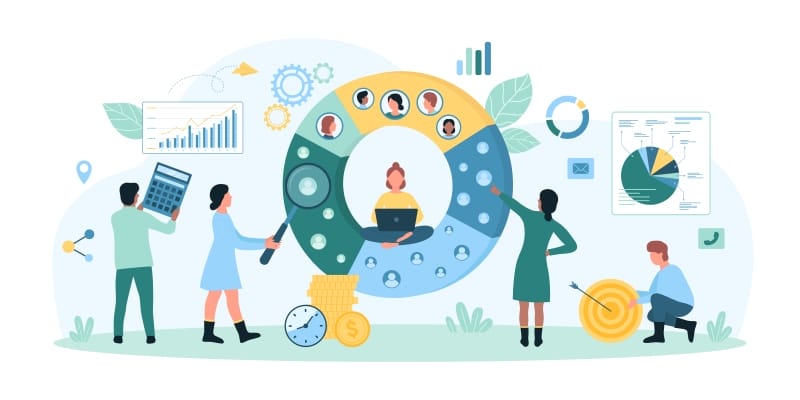
Identifying your high-value customers paves the way to financial success. These individuals enhance profits not just by spending more but by consistently doing so over a longer period. Evaluating comprehensive data like average order size and the average customer lifespan is fundamental to calculate customer lifetime value.
Brand advocates, too, hold high value not because of their spending but due to their influence on market trends and social impact.
Analyzing purchase history
Dive into the treasure trove of data that is a customer’s purchase history. This information is a crystal ball into future buying behavior, offering insights into:
- who buys what and when
- identifying customers with high potential value
- recognizing seasonal selling patterns
- informing the planning of inventory and marketing efforts
Moreover, historical purchase data is a gold mine for forecasting future demand, thereby enabling data-driven inventory management and marketing strategies.
Segmenting customers based on CLV
Segmenting customers according to their CLV allows businesses to devise personalized marketing strategies that cater to the specific needs of different customer groups.
This segmentation results in targeted marketing efforts for specific customer segments, ensuring resources are allocated efficiently toward those with higher potential profitability.
Segments with high total revenue and the highest CLV may enjoy premium treatment, while lower-value segments might be targeted with campaigns to stimulate purchases and enhance product knowledge.
Leveraging Customer Lifetime Value for Marketing Strategies
Harness the potential of CLV to propel your marketing strategies. Personalized marketing strategies, as demonstrated by giants like Amazon and Spotify, engage customers more effectively and drive loyalty.
A range of marketing tools and resources support the deployment of personalized marketing tactics, all intending to enhance CLV.
Targeting high-value customers with personalized marketing not only enhances customer satisfaction but also enables businesses to use their marketing resources more efficiently.
Personalized marketing
The power of personalized marketing lies in its ability to:
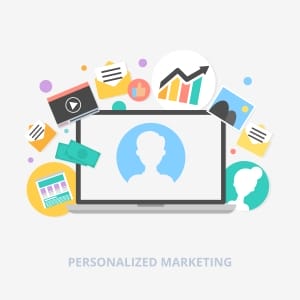
- Create resonant and individualized experiences
- Use data and analytics to customize messages and offers to match individual preferences
- Enhance loyalty and retention rates
- Encourage repeat business and boost a company’s profitability
These focused campaigns can significantly impact CLV.
Retargeting campaigns
Retargeting campaigns are like digital breadcrumbs leading customers back to your products. These campaigns can reduce cart abandonment rates and improve CLV by reminding potential customers of products they previously expressed interest in.
Dynamic retargeting, which tailors ads based on a user’s recent interactions, boosts click-through rates and encourages brand engagement.
Improving Customer Retention and Loyalty
Improving customer retention and loyalty is not just beneficial; it’s economically sound.
A mere 5% increase in retention can result in a profit increase between 25-95%, making it clear that keeping existing customers is far less expensive than acquiring new ones. By focusing on high customer lifetime retention rates, businesses can ensure long-term success and profitability.
Establishing a robust onboarding experience and delivering consistently on promises can cultivate loyalty, increase customer lifetime, and create a feedback cycle for continuous improvement.
Enhancing customer experience
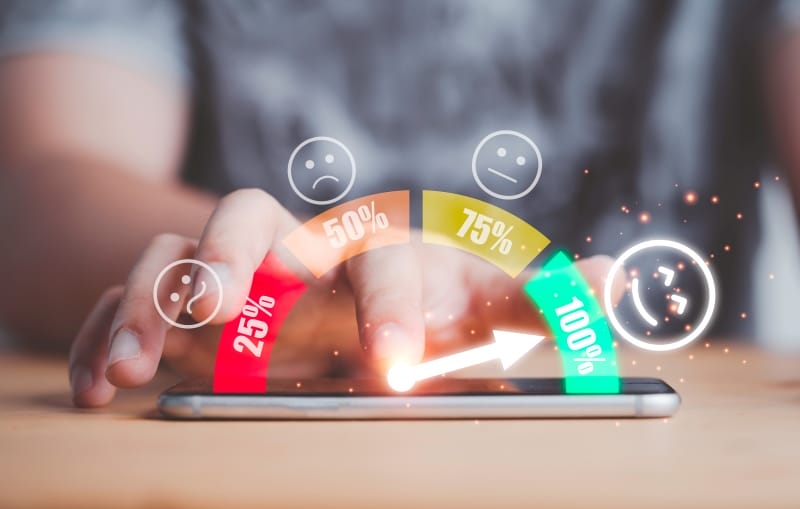
An exceptional customer experience is the backbone of retention and loyalty. Adopting an omnichannel approach ensures a seamless experience across different platforms and devices, contributing to a superior customer journey.
Efficient handling of customer issues by employees, who are often the customers’ first point of contact, is pivotal in delivering this experience and fostering strong customer relationships.
Implementing loyalty programs
Loyalty programs are the secret sauce in the recipe for high customer lifetime value and retention, as they help maintain engagement and reward frequent purchases, which in turn boost retention and spending amounts for loyal customers.
A well-executed loyalty program can instill a sense of belonging and result in higher retention rates.
Increasing Customer Lifetime Value through Upselling and Cross-Selling
Elevating CLV is an art that can be mastered through strategic upselling and cross-selling. Businesses can stimulate repeat purchases and discover new sales opportunities by understanding customer preferences and using personalized marketing strategies.
The fact that existing customers, including the average customer, spend 67% more than new ones underscores the potential profitability of upselling and cross-selling to this demographic, making it crucial to focus on the existing customer.
Effective upselling techniques
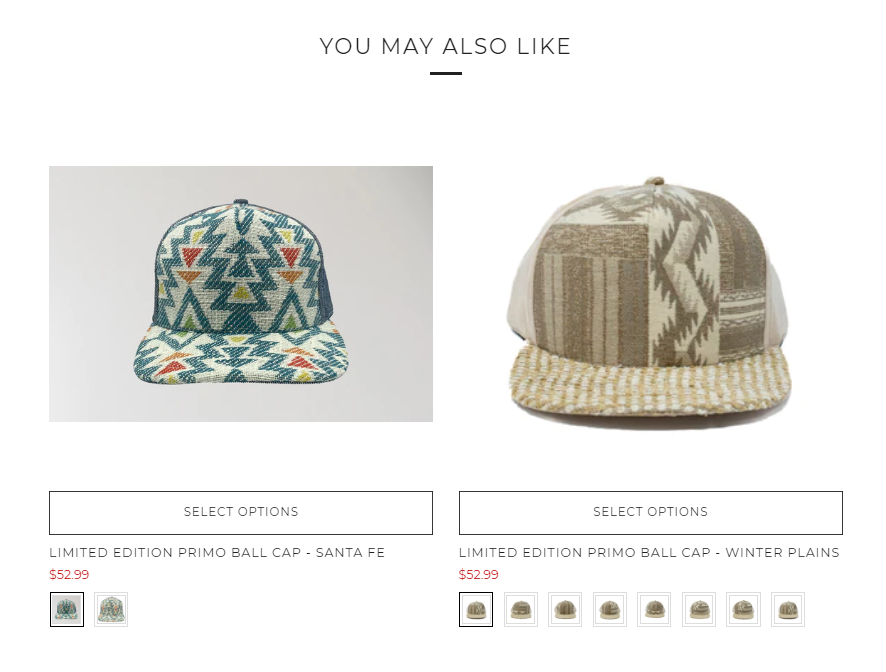
Upselling is a delicate dance that, when done right, can lead to increased CLV. Keeping upsell price margins reasonable, using the decoy effect, and providing easy one-click upgrade options are all techniques that contribute to a successful upselling strategy.
Cross-selling opportunities
Cross-selling opportunities abound when businesses analyze purchase history to determine commonly sold product combinations. This strategy can be optimized by displaying product recommendations at strategic points during the customer journey.
Optimizing Pricing Strategies for Customer Lifetime Value
Fine-tuning pricing strategies while considering CLV can result in substantial profitability gains. It’s about striking the right balance between price increases and customer perception of value, ensuring customers feel they are receiving fair value for their money.
Balancing price increases with customer value – Strategic planning, testing, and transparent communication are essential when considering price increases. It’s important to manage these adjustments carefully to maintain customer loyalty and perceived value.
Price tiering and customization – Price tiering and customization are strategic approaches that cater to a spectrum of customer preferences and budgets, attracting a broader customer base and increasing revenue from higher-volume sales.
Utilizing Technology and Analytics for CLV Insights
In today’s business world, technology and analytics play an invaluable role in deriving deep insights into CLV. CRM systems and predictive analytics offer powerful tools for tracking and forecasting CLV, providing businesses with the data they need to make informed decisions.
CRM systems and CLV tracking
CRM systems serve as the central hub for CLV tracking, allowing businesses to:
- Keep tabs on customer interactions and transactions
- Provide a unified view across sales, marketing, and customer success
- Yield insights that can significantly enhance CLV.
Predictive analytics for CLV forecasting
Predictive analytics serve as a powerful tool for forecasting CLV. It enables businesses to use historical data to predict future trends, identify the most valuable customers, and determine which products or services will be key revenue generators.
Summary
By now, the transformative power of measuring Customer Lifetime Value should be crystal clear. From identifying high-value customers to personalizing marketing efforts and optimizing pricing strategies, CLV is the compass that guides businesses towards profitability and growth. Embrace these strategies, and watch as your business flourishes, nurtured by the loyal customers at its core.
Frequently Asked Questions
Which is the best example of using a customer lifetime value approach to improve customer lifetime?
The best example of using a customer lifetime value approach is relative to the industry, year, and even the person who uses the approach.
Here are 9 inspiring examples of how major companies use CLV to improve their customer lifetime loyalty, but there are many more. Try choosing a CLV example that you like the best!
How do you use the CLV formula?
The CLV formula can be used in numerous ways. Initially, the CLV number you arrive at for your business can be used as a baseline for where your CLV is today.
Other ways to use CLV include developing specific marketing strategies for the segments of customers you created when determining total CLV. Those segments have their own CLV, and you’ll use that number to determine the type, frequency, and strategies to use for marketing to those with higher CLV’s.
Overall, CLV is used to improve the loyalty of and purchases or services each customer, with more resources directed at the highest value customers.
How do you drive the average customer lifetime value?
To drive customer lifetime value, you can utilize cross-selling and upselling, offer a memorable customer experience, create a loyalty program, listen to your customers, reach consumers with a seamless omnichannel approach, build a community, set up a referral program, and offer free upgrades. These strategies can help maximize the value your business derives from each customer.
How do you calculate the CLTV?
To calculate the CLTV take the Customer Value (CV) and multiply it by the Average Customer Lifespan (ACL). This gives you the CLV (sometimes called CLTV).
About The Authors

Beverly Mapes
Founder & President, Top Of The ListBev founded Top Of The List in 2006 and has over 25 years of experience working with technology. In her free time, she competes in dog agility competitions with her Golden Retrievers, Cosmo, and Finn.




